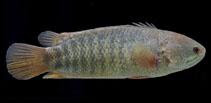
Common Name Country Language
Alalo Philippines Pangasinan
Alito Philippines Kuyunon
Arraro Philippines Ilokano
Atas Philippines Bikol
Bale belang Indonesia Makassarese
Betik Indonesia Javanese
Betok Indonesia Malay
Cá Rô d?ng Viet Nam Vietnamese
Cá ro dong Viet Nam Vietnamese
Cá rô dông Viet Nam Vietnamese
Climbing perch Bangladesh English
Climbing perch Sri Lanka English
Climbing perch India English
Climbing perch Malaysia English
Climbing perch Papua N Guinea English
Climbing perch UK English
Climbing perch USA English
Gutan Philippines Visayan
Kabai Nepal Nepali
Kallemutti India Malayalam
Karippidi India Malayalam
Karooppu India Malayalam
Kavaiya Sri Lanka Sinhalese
Khakoi India Khasi
Kletterfisch Germany German
Klätterfisk Sweden Swedish
Koi Bangladesh Bengali
Koi India Assamese
Koi India Bengali
Kranh Cambodia Khmer
Krucilan Indonesia Javanese
Laziec Poland Polish
Liwalo Philippines Kapampangan
Liwalo Philippines Tagalog
Martiniko Philippines Tagalog
Nga-bye-ma Myanmar Burmese
Nga-pri Myanmar Burmese
Pa kheng Laos Laotian
Panaiyeri kendai India Tamil
Pepuyu Malaysia Malay
Piit Philippines Maranao/Samal/Tao Sug
Pla mor Thailand Thai
Pla mor Thai Thailand Thai
Pla sadet Thailand Thai
Puyo Philippines Bikol
Puyo Philippines Maranao/Samal/Tao Sug
Puyo Philippines Tagalog
Puyo Philippines Visayan
Puyo-puyo Philippines Maranao/Samal/Tao Sug
Puyu Malaysia Malay
Ryba-polzun Russian Fed Russian
Tinikan Philippines Tagalog
Trey kranh Cambodia Khmer
Trey kranh srai Cambodia Khmer
Ukabi India Manipuri
SOURCE: http://www.fishbase.org
Alalo Philippines Pangasinan
Alito Philippines Kuyunon
Arraro Philippines Ilokano
Atas Philippines Bikol
Bale belang Indonesia Makassarese
Betik Indonesia Javanese
Betok Indonesia Malay
Cá Rô d?ng Viet Nam Vietnamese
Cá ro dong Viet Nam Vietnamese
Cá rô dông Viet Nam Vietnamese
Climbing perch Bangladesh English
Climbing perch Sri Lanka English
Climbing perch India English
Climbing perch Malaysia English
Climbing perch Papua N Guinea English
Climbing perch UK English
Climbing perch USA English
Gutan Philippines Visayan
Kabai Nepal Nepali
Kallemutti India Malayalam
Karippidi India Malayalam
Karooppu India Malayalam
Kavaiya Sri Lanka Sinhalese
Khakoi India Khasi
Kletterfisch Germany German
Klätterfisk Sweden Swedish
Koi Bangladesh Bengali
Koi India Assamese
Koi India Bengali
Kranh Cambodia Khmer
Krucilan Indonesia Javanese
Laziec Poland Polish
Liwalo Philippines Kapampangan
Liwalo Philippines Tagalog
Martiniko Philippines Tagalog
Nga-bye-ma Myanmar Burmese
Nga-pri Myanmar Burmese
Pa kheng Laos Laotian
Panaiyeri kendai India Tamil
Pepuyu Malaysia Malay
Piit Philippines Maranao/Samal/Tao Sug
Pla mor Thailand Thai
Pla mor Thai Thailand Thai
Pla sadet Thailand Thai
Puyo Philippines Bikol
Puyo Philippines Maranao/Samal/Tao Sug
Puyo Philippines Tagalog
Puyo Philippines Visayan
Puyo-puyo Philippines Maranao/Samal/Tao Sug
Puyu Malaysia Malay
Ryba-polzun Russian Fed Russian
Tinikan Philippines Tagalog
Trey kranh Cambodia Khmer
Trey kranh srai Cambodia Khmer
Ukabi India Manipuri
SOURCE: http://www.fishbase.org


